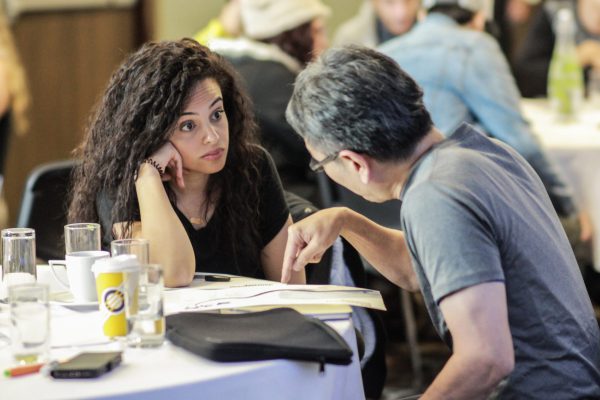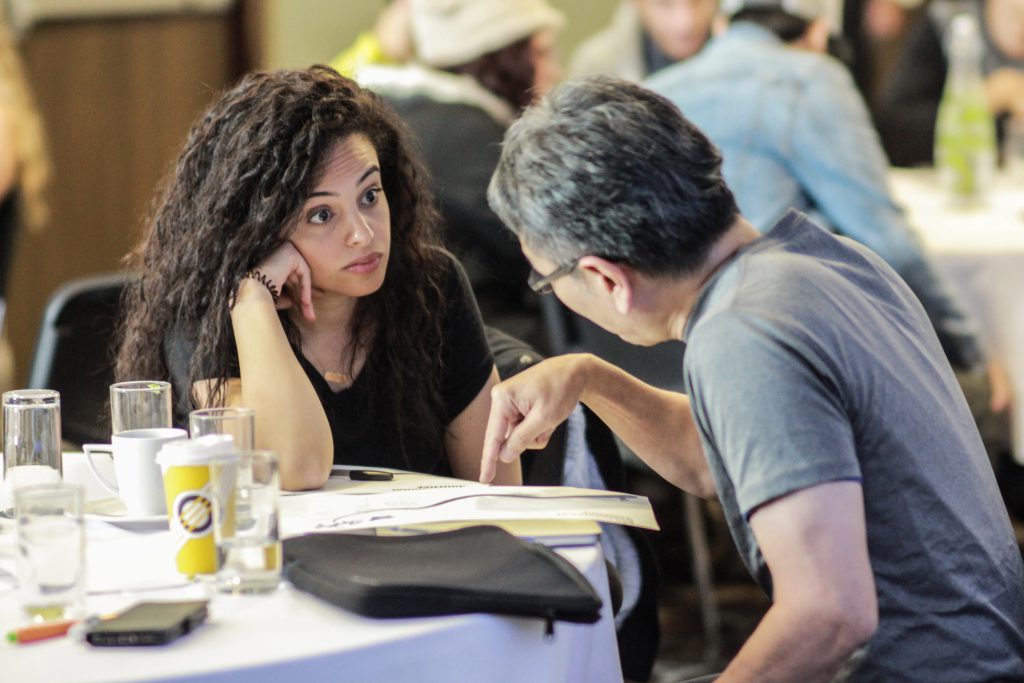Giving and receiving feedback at work is challenging. Here’s how we do it.
Welcome to our newest blog series — How We Work. Want to know what it’s like to work at Bunny Studio? Want to learn how we solved workplace challenges?
This week, we’re talking about our Braintrust framework. How do we encourage candid feedback in the workplace? Read on to find out.
Oh, and while you’re here, why don’t you read last week’s edition of How We Work? It’s all about how we look after each other.

But if you prefer to watch a video instead, click here:
What was our challenge?
Giving and receiving feedback is hard. Especially when it needs to be done in a professional setting. But candid, honest feedback is necessary for effective collaboration and decision making.
Braintrusts also encourage creativity. Through receiving candid feedback, creative ideas have room to grow, improve and, eventually, be implemented.
So, the challenge: how can candid feedback be encouraged in the workplace?
What’s the solution?
Constructive feedback can be encouraged by explicitly classifying it as valuable and necessary.
At Bunny Studio, we value constructive feedback. Braintrusts are one of the efforts we use to foster it. Our braintrust framework based on Pixar’s original framework.
In essence, we periodically put smart, passionate experts in a meeting together, give them a problem to pick apart, and encourage them to be candid.
Why does it work?
Braintrusts provide a safe place for giving and receiving feedback about a specific project. This improves the way team members analyze data and communicate with each other. It’s also a reciprocal process. When you give candid, honest feedback to others so they can grow, you receive the same in return. The collaborative environment that results accelerates and strengthens good ideas.

How does it work?
Setting up a braintrust is easy.
- Decide on a meeting time and cadence. At Bunny Studio, each team runs weekly braintrusts on Friday at a time that works for all team members.
- Decide who will be invited. Align your experts according to the theme of the braintrust. For example, there’s no use inviting golf experts to a braintrust about football. At Bunny Studio, each business unit runs their own weekly braintrust, inviting all members of that unit.
- Decide on the meeting’s structure. At Bunny Studio, we run braintrusts like this:
- Two presenters per session, 15–20 minutes presentation time each. Presenters rotate as determined by the business unit leader.
- Each round begins with the presenter speaking for 5 minutes. During this time, the presenter explains their project, the sort of feedback they are looking for, and the reason for asking for that feedback.
- During the presentation, the other attendees try to identify issues. How could the project be improved?
- After the presentation, everyone provides candid feedback to the presenter. The presenter should listen and take notes. If the braintrust has many attendees, the project’s main stakeholders provide feedback at the meeting. Observers who wish to provide feedback can do so in writing after the meeting.
- After the presentation, while presenters do not need follow any of the specific suggestions given, they do have to think about them all. If some comments need to be addressed, presenters should do this after the braintrust.
And that’s it.
Remember, this is what works for us, but you can adapt the structure to better fit your organization or company.
Anything else?
Giving candid feedback can be difficult, but worthwhile as it leads to effective collaboration and decision making. When receiving feedback, don’t take it personally. Remember that receiving and implementing feedback will help you grow as a professional. More importantly, when giving feedback, don’t make it personal. Remember to balance positive and negative feedback, and keep it focused on what has been presented.
Oh, and one more thing — braintrusts are most useful early on in the product or project planning process. Why? Well, it’s better to know earlier rather than later if you’re on the right track with a new endeavor. Receive feedback and catch mistakes early, and you’re less likely to waste valuable time on things that don’t matter. Books can only teach you so much; feedback from experts is what will really help you grow.
Braintrusts are about honest feedback, yes. But they are also about growth, compassion and efficiency.

How is candid feedback encouraged at your workplace? Have any tips you’d like to share? Let us know in the comments.
Please note this blog is a copy of the original published in Medium by Emmy Tither.









